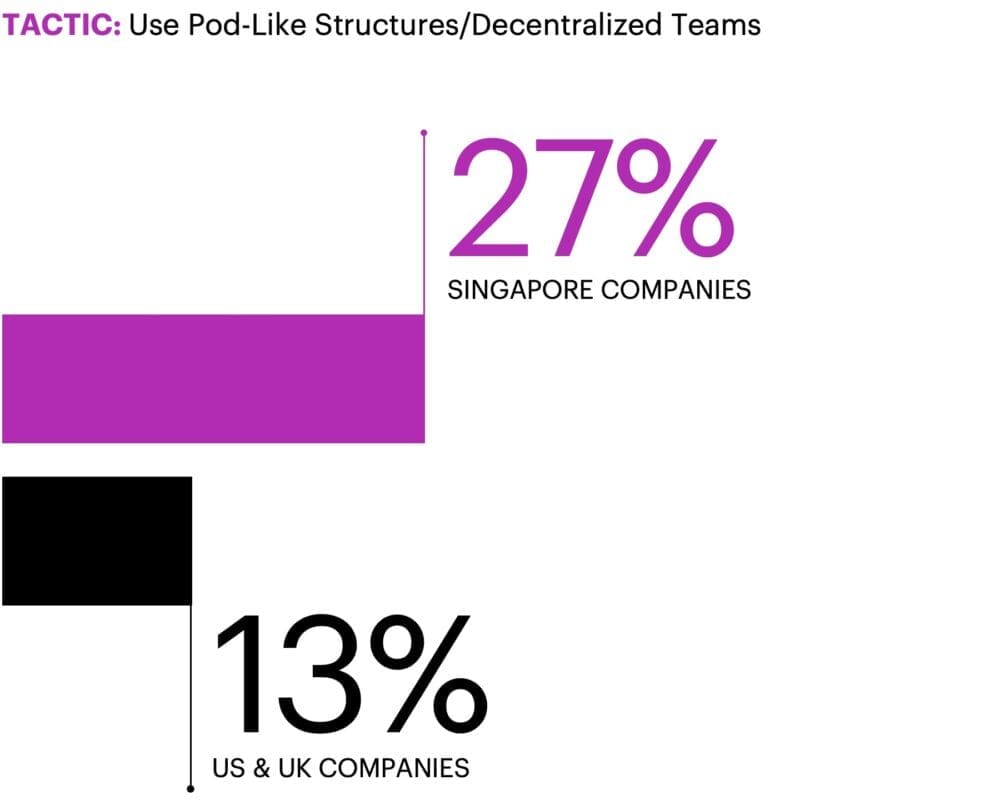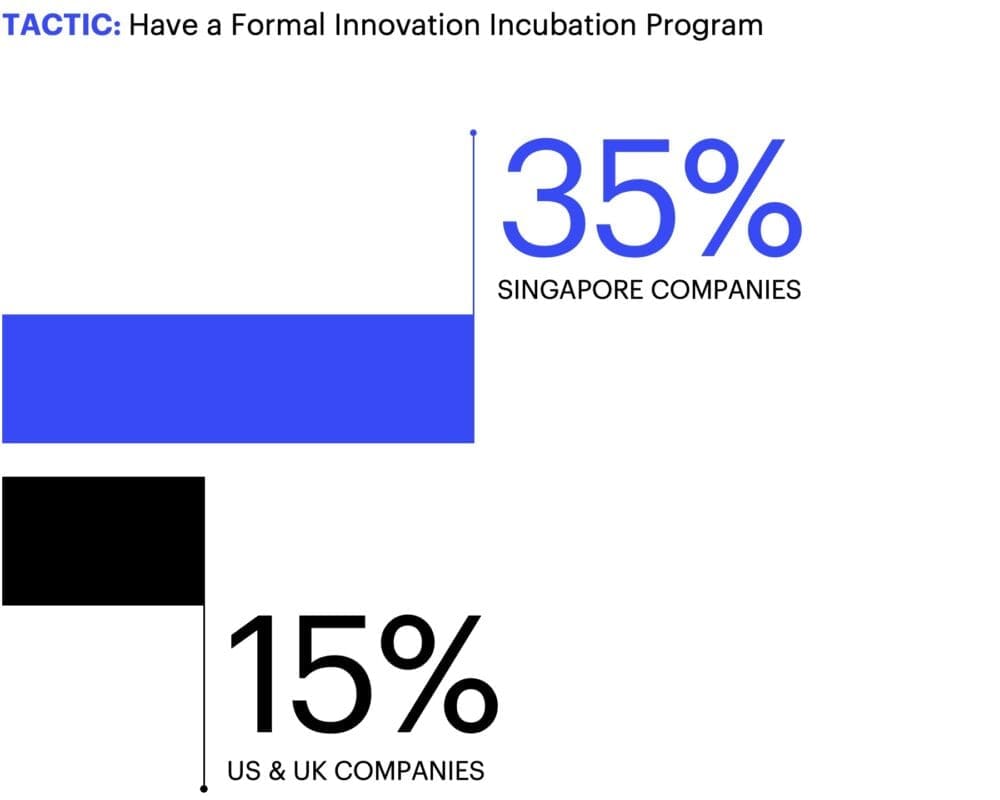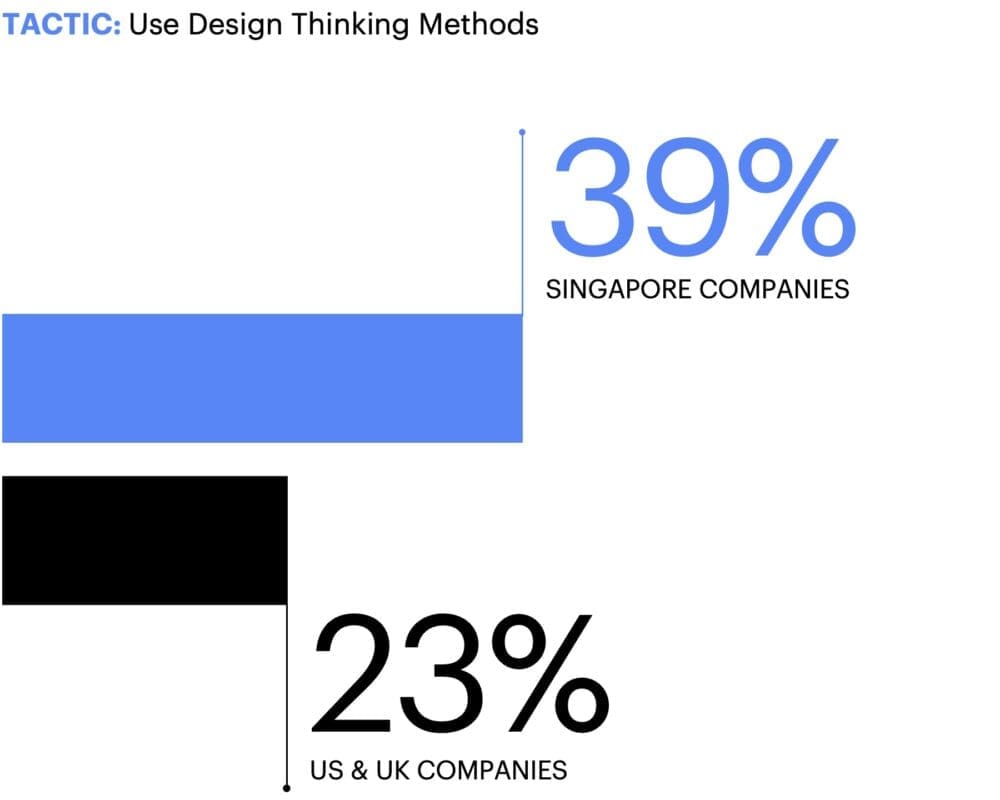BLOG
Four Ways to Futureproof and Build Resilience Through Innovation in Southeast Asia
Building innovation for resilience is no longer a good to have, but a must-have for companies in Southeast Asia.
In today’s world of volatility, uncertainty, complexity and ambiguity (VUCA), businesses continue to be challenged and their resilience tested. Innovation is increasingly crucial for enhancing resilience, yet most organizations still see tension between the two instead of the potential for a more positive business outcome. In our latest global research and report, Building Business Resilience Through Innovation, we found that the most successful organizations are using innovation to drive business resilience.
Southeast Asia (SEA), one of the world’s fastest-growing regions, faces unique challenges such as limited resources, inadequate infrastructure, and complex cultural and socio-economic contexts. Yet these constraints are also the reasons why the region is one of the most creative in problem-solving due to its frugal yet bold innovation culture. In fact, according to the Global Innovation Index 2022, SEA is one of the only regions globally closing the gap on North America and Europe in terms of innovation and has become a hotbed for tech startups and a home to a number of highly successful companies with soaring valuations.
Leading the pack is Singapore which positions itself as a hub for innovation in the SEA region. With plans to invest SG$24 billion ($18.1 billion USD) over the next three years to help local businesses build “deep, future-ready” capabilities for innovation and transformation. The country has already attracted Google, Dyson, Visa and Hyundai which have chosen to set up their APAC headquarters and innovation labs in Singapore.
Our research further unveils that several companies in SEA innovate better than many global players by leveraging diverse innovation techniques across an organization. Here are four successful innovation techniques we uncovered:
1. Embrace a Lean Startup Mentality to Drive Organization-wide Innovation
Large enterprises today possess years of built-up legacy practices and a bureaucracy that is often hard to change. A lean startup mentality allows large enterprises to operate more nimbly and flexibly, adapting to business needs or customer feedback in real time. This is achieved by organizing traditionally large innovation teams into pod-like working squads, each with the goal of building new products, testing features, and validating ideas in an agile manner. Firms in Singapore are using this tactic well and are in fact, twice as likely to use pod-like team structures / decentralized teams than in the US and UK (27% vs 13%).

For example, MB Bank, a leading bank in Vietnam, spun off a business unit when it embarked on its digital banking journey. To accelerate digital transformation, the digital bank operated much like a lean and agile startup to ramp up its digital product development process. The new digital banking model was then reverse-engineered across the legacy bank as part of the enterprise-wide transformation. Today, MB is highly regarded as one of the most innovative banks in Vietnam and has close to a thousand employees in its digital, IT and tech divisions working in pod-like structures to continuously deliver products ahead of its competition. It is therefore no surprise that MB digital banking has acquired close to 20 million retail customers today in a short period of just 3 years since its launch and is the only banking app in Apple’s Top 10 Apps two years in a row. Learn more about Prophet’s work with MB Bank.
In Singapore, DBS, one of Asia’s most digitally advanced and innovative banks, set up DBS Asia X (DAX), a collaborative innovation facility where it runs all open innovation-related initiatives, supported by partners, startups, and its other innovation teams such as DBS Ventures and DBS Xchange. Separate from its headquarters in the central business district, employees and external resources in this facility work in pod-like teams with startup mentalities to design and deliver digital products that help DBS remain one of the top digital banks in the world.
Takeaway: Large traditional organizations must break down the walls of bureaucracy, and function like startups to stay agile and ahead of the innovation curve.
2. Leverage Open Innovation to Expand Innovation Horizons
Open innovation is an approach that involves working with external partners to generate and implement new ideas. Instead of relying solely on internal resources, companies engage with a variety of external stakeholders, such as customers, suppliers, universities, startups, and other companies, to develop new products, services and processes. Our research shows that organizations in Singapore are more likely to have formal innovation incubation programs than in the West (35% vs 15%).

Singapore’s government remains one of the most innovative countries in its “Smart Nation” endeavor and continues to lead by example when it comes to open innovation. The Infocomm Media Development Authority (IMDA), a part of Singapore’s Ministry of Communications and Information, promotes open innovation through its Open Innovation Platform which offers co-funding support for prototyping and deployment of ideas from the public.
Across Singapore and Hong Kong, DBS has also been running several pre-accelerator programs, which allows them to stay connected with new, emerging fintech; resulting in new mobile features such as conversational banking, which is a combination of AI technologies from fintech startups such as Moneythor, V-Key and Kasisto.
The Malaysia-based airline, AirAsia, established Redbeat Ventures to expand its offerings beyond flights to include other travel-related products, such as hotels and travel insurance. The company also organized hackathons to generate ideas and solutions for specific challenges, inviting employees, customers and external partners to participate and providing resources and support to help teams prototype and test their ideas.
Takeaway: Organizations should adopt open innovation and increased collaboration as a strategic approach to tap into the expertise of external partners and stakeholders, and drive innovation, growth, and competitive advantage.
3. Adopt Design Thinking to build and meet dynamic consumer needs
Many innovation initiatives fail due to a lack of structure and process when developing new services and products. This is where design thinking comes in. It is a powerful tool for fostering innovation by understanding user needs, questioning existing assumptions, reframing problems, and generating pioneering solutions that can be prototyped and tested. Design thinking methods are well implemented by firms, especially in Singapore, and twice as likely to use this tactic for innovation as compared to the West (39% vs 23%).

CP Group, a Thai conglomerate with operations in agribusiness, retail, and telecommunications, embraced design thinking boldly when they set up True Digital Academy in partnership with the US-based design thinking institute, General Assembly. The Academy doubles down on the adoption of design thinking for innovating new products and services to meet shifting consumer needs. In fact, CP group’s newly launched line of high-protein instant noodles targeted at health-conscious consumers, and a plant-based brand, MEAT-ZERO is the result of the new design thinking approach. The Group’s ambition is to make MEAT-ZERO one of the top three alternative meat brands in the world by 2026.
Unilever is another example of a company that leverages design thinking to drive innovation in its target markets and has succeeded in being the first in market for many of its hair care products. In recent years, the proportion of Indonesian women wearing the hijab has grown significantly (~ 20% since 2018). In response, Unilever began increasing efforts to innovate hair care via design thinking frameworks to better serve this target segment, by taking into consideration the human truths such as pain points and needs of the hair care routine across various hijaber personas. By leveraging design thinking, Unilever can better serve the ever-changing needs of its target markets and customers.
Takeaway: The use of design thinking to innovate and adapt to shifting consumer needs and market trends, coupled with a long-term commitment to innovation, is a key driver of business resilience and growth.
4. Leverage Scenario Planning to Stay Future Proof
In the wake of increased economic unpredictability and global instability, scenario planning has become more important than ever. Scenario planning allows organizations to prepare for potential future events or unforeseen market changes. For example, DBS Bank used scenario planning to anticipate the impact of digital disruption on the banking industry and developed a digital transformation roadmap to stay ahead of the curve. It also developed a “Future of Work” scenario to anticipate how work and workplaces may change in the future and are using the scenario to inform their HR policies and strategies.
Elsewhere in Singapore, Keppel Corporation assessed multiple challenges such as overcapacity, low oil prices, prolonged downturn and increased competition from China. With scenario planning, Keppel developed the “2030 Energy Scenario” assessment which involved solutions such as diversifying their business into areas such as renewables and data centers to reduce their dependence on the oil and gas industry.
Takeaway: To future-proof their business, organizations must incorporate scenario planning into their strategy development process to identify potential risks and opportunities to develop contingency plans to mitigate risks.
FINAL THOUGHTS
Forward thinking companies in SEA are leveraging multiple techniques in tandem to stay ahead, de-risk their business, and win against competitors. Innovation, however, doesn’t start and end within the company – tapping into both internal and external resources and expertise can be crucial, especially during this period of VUCA. Building innovation for resilience is no longer a nice to have, but a must-have for all organizations. Embracing an innovation culture and integrating an innovative way of life takes time and patience. Most importantly, organizations need to foster the right innovation approach and tools in a structured manner to achieve the desired goals and results.
